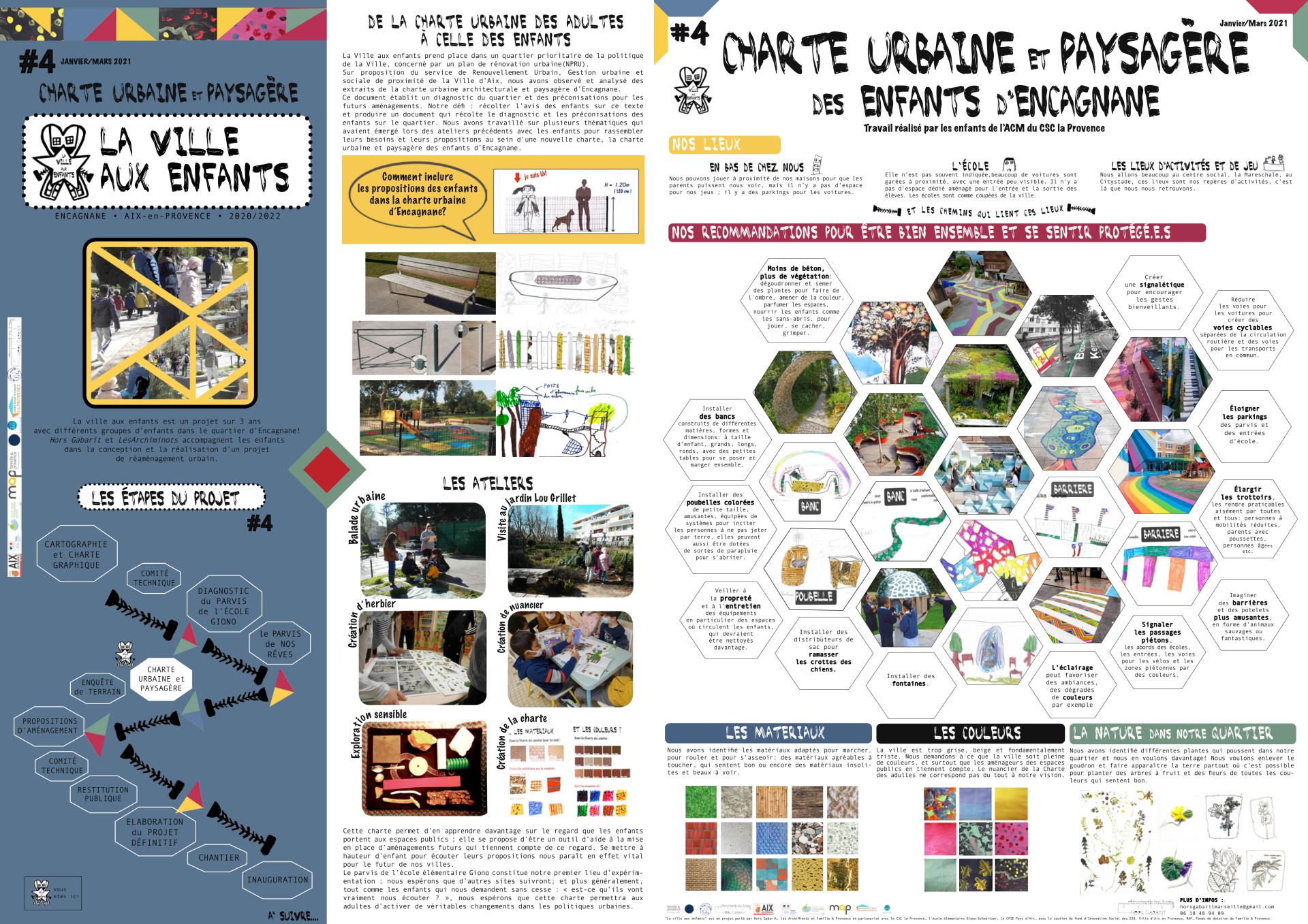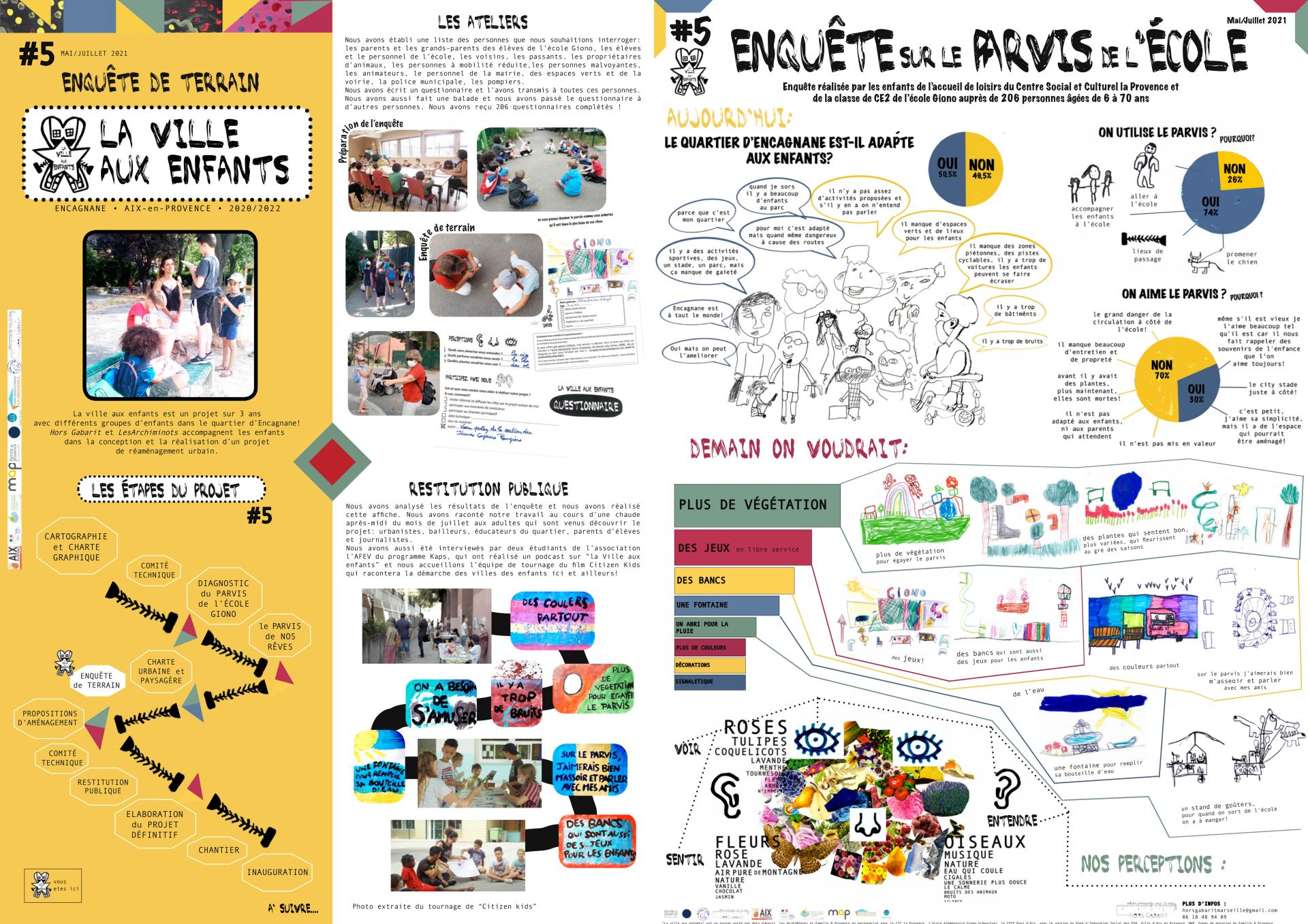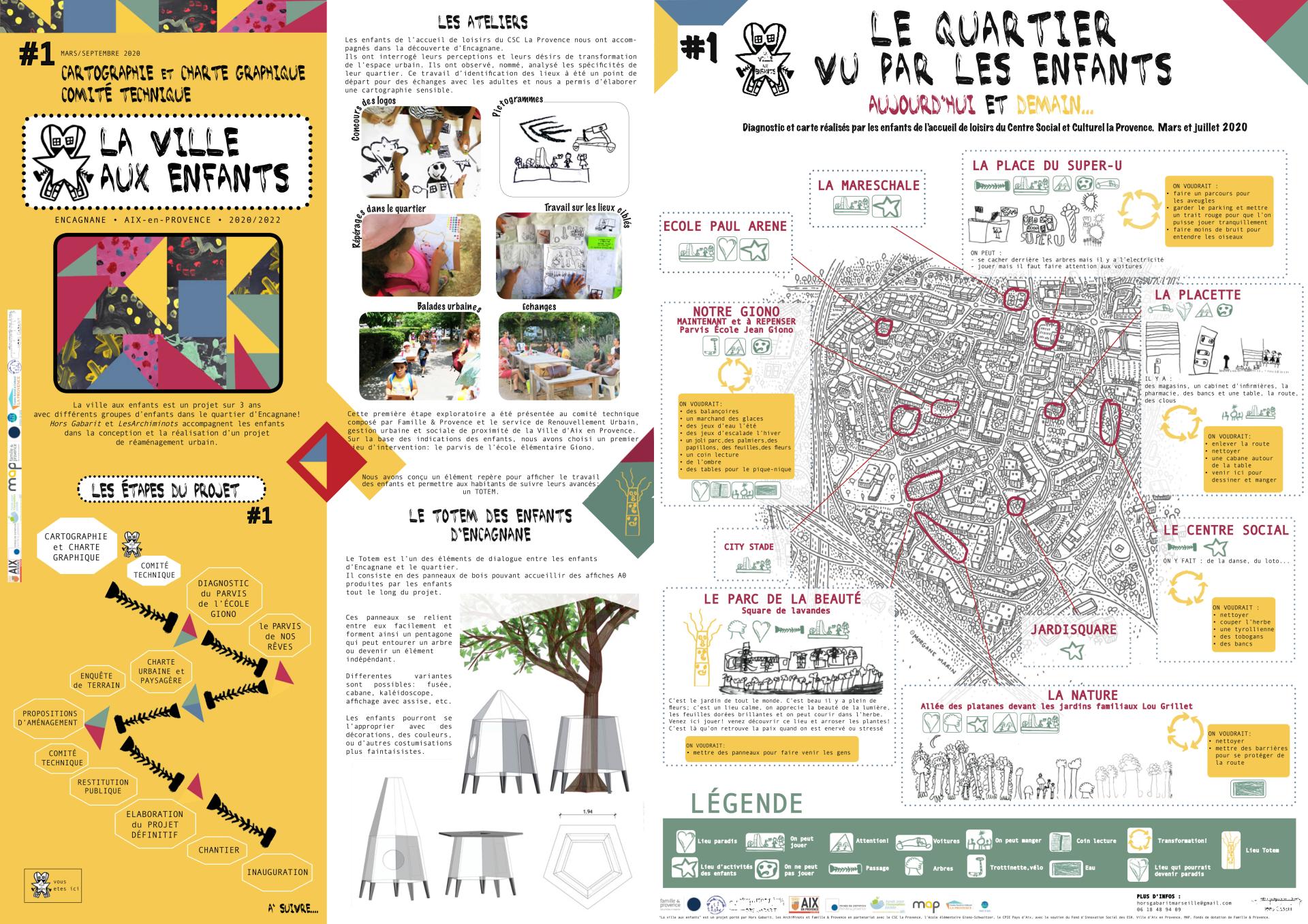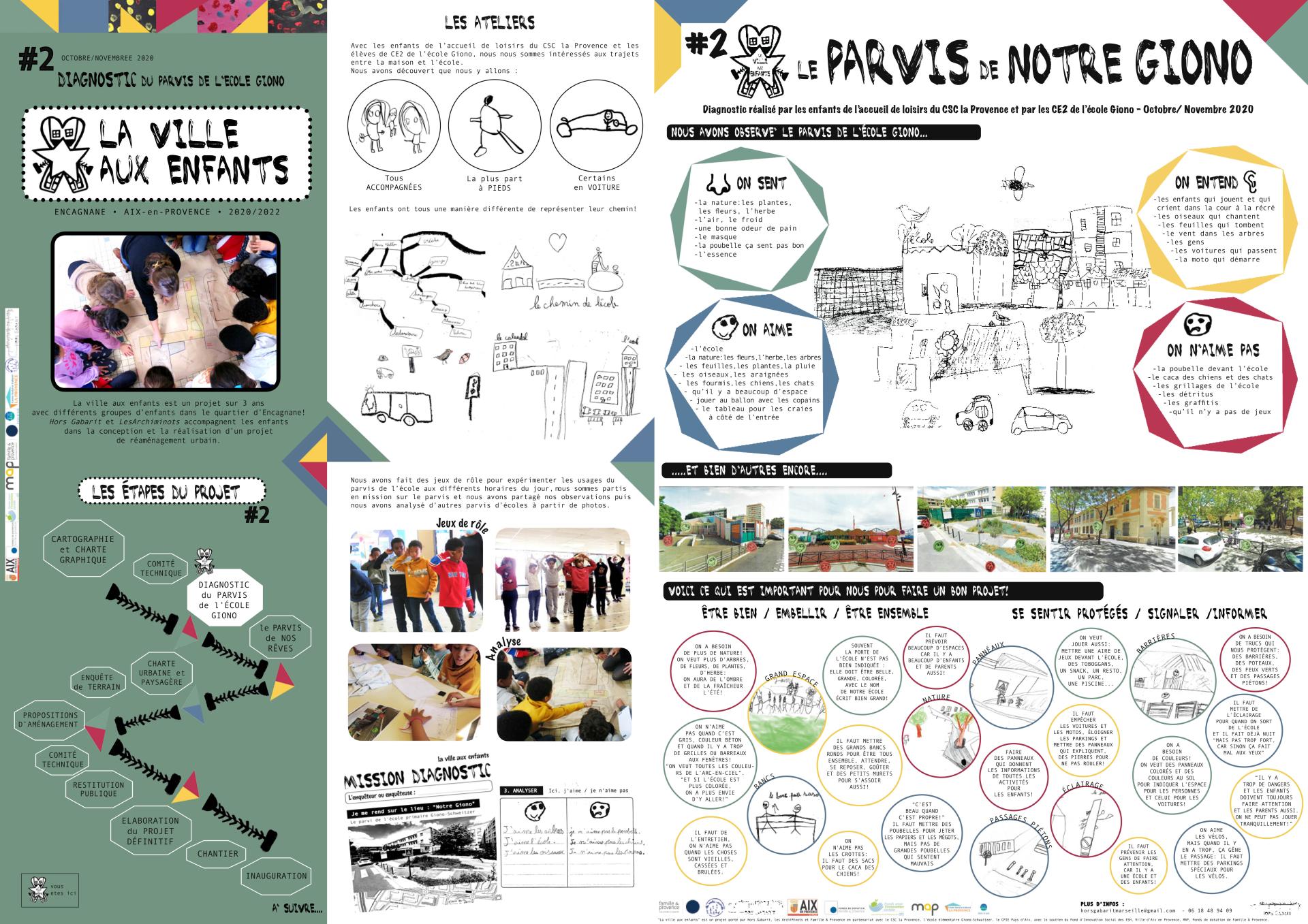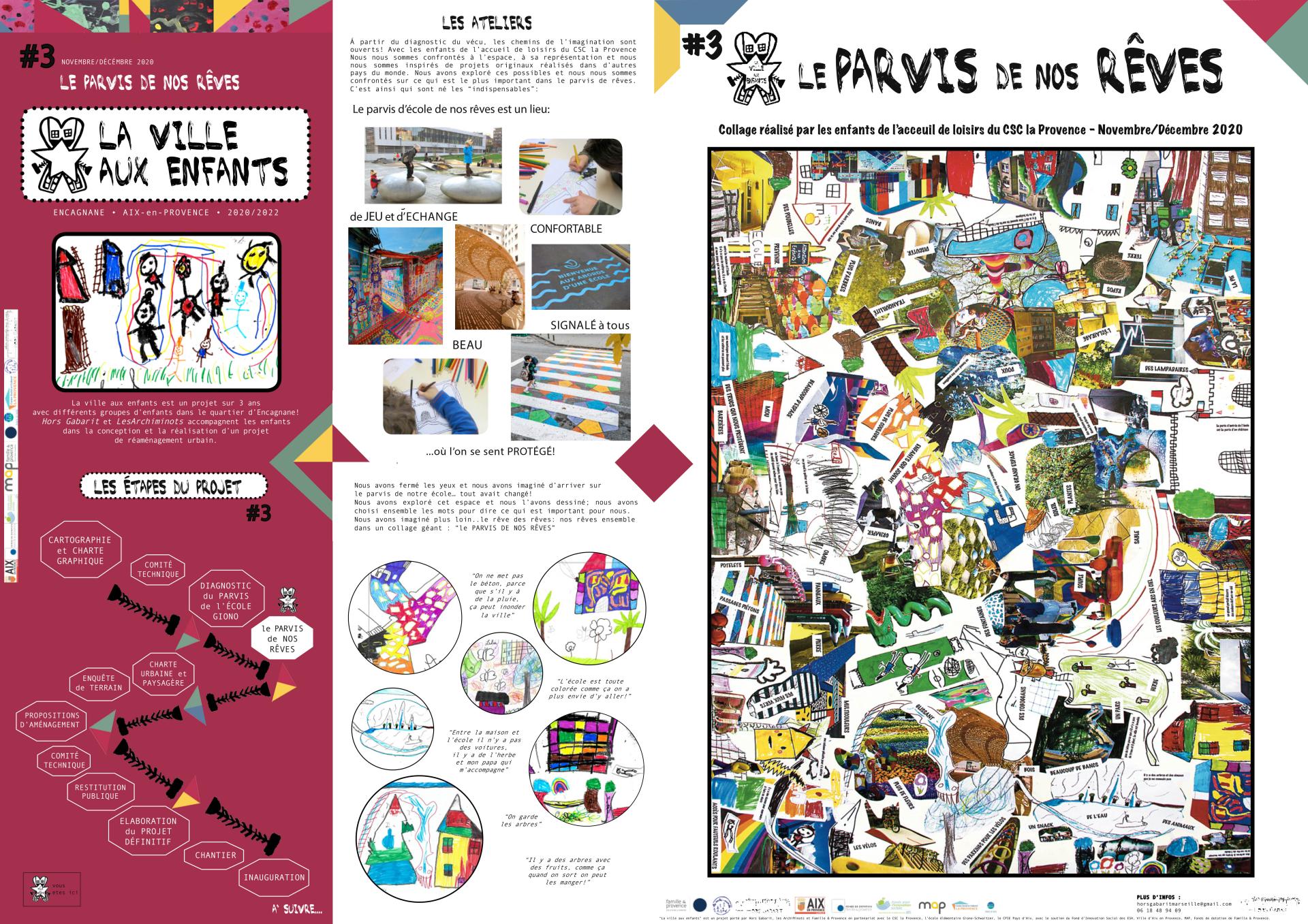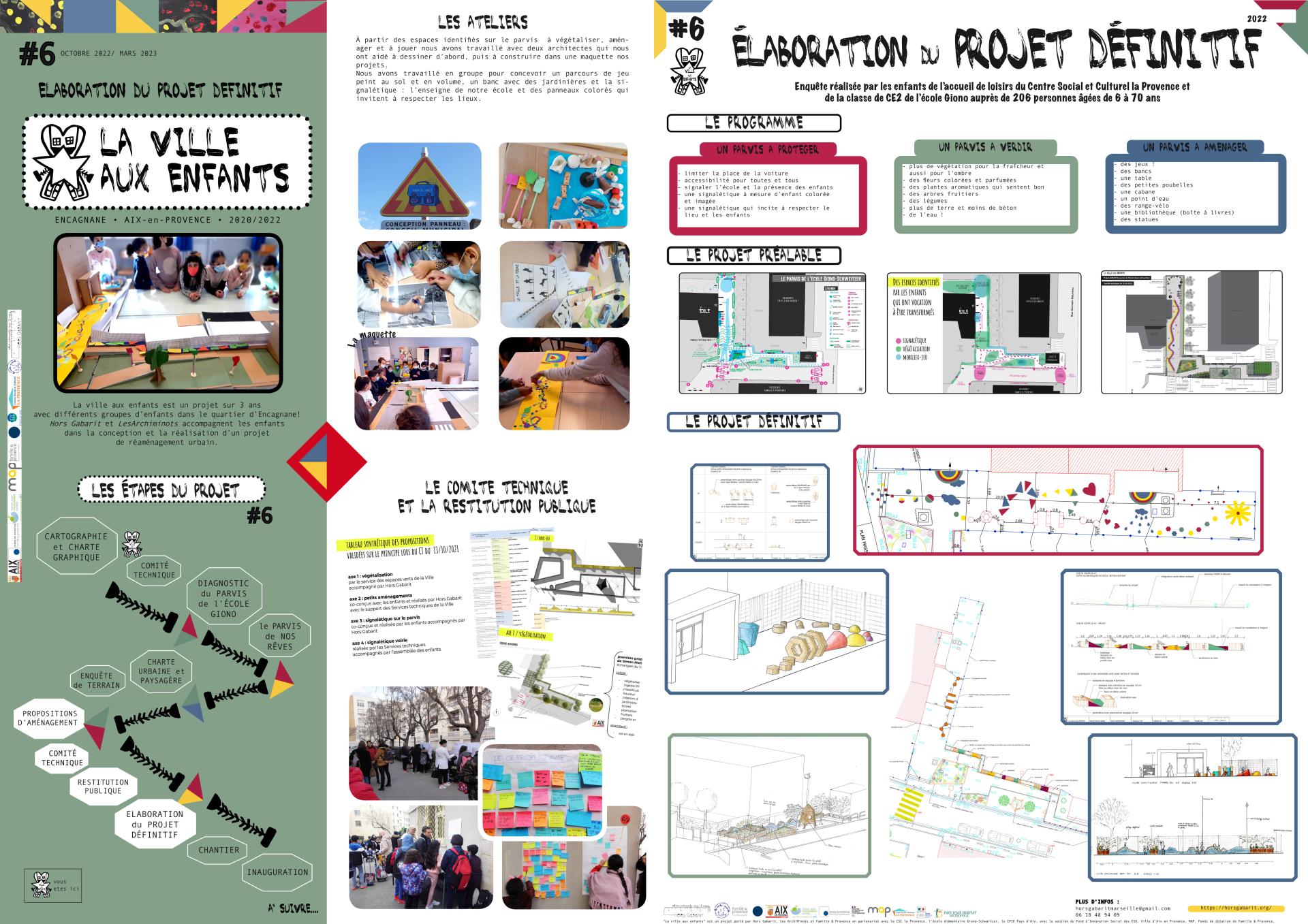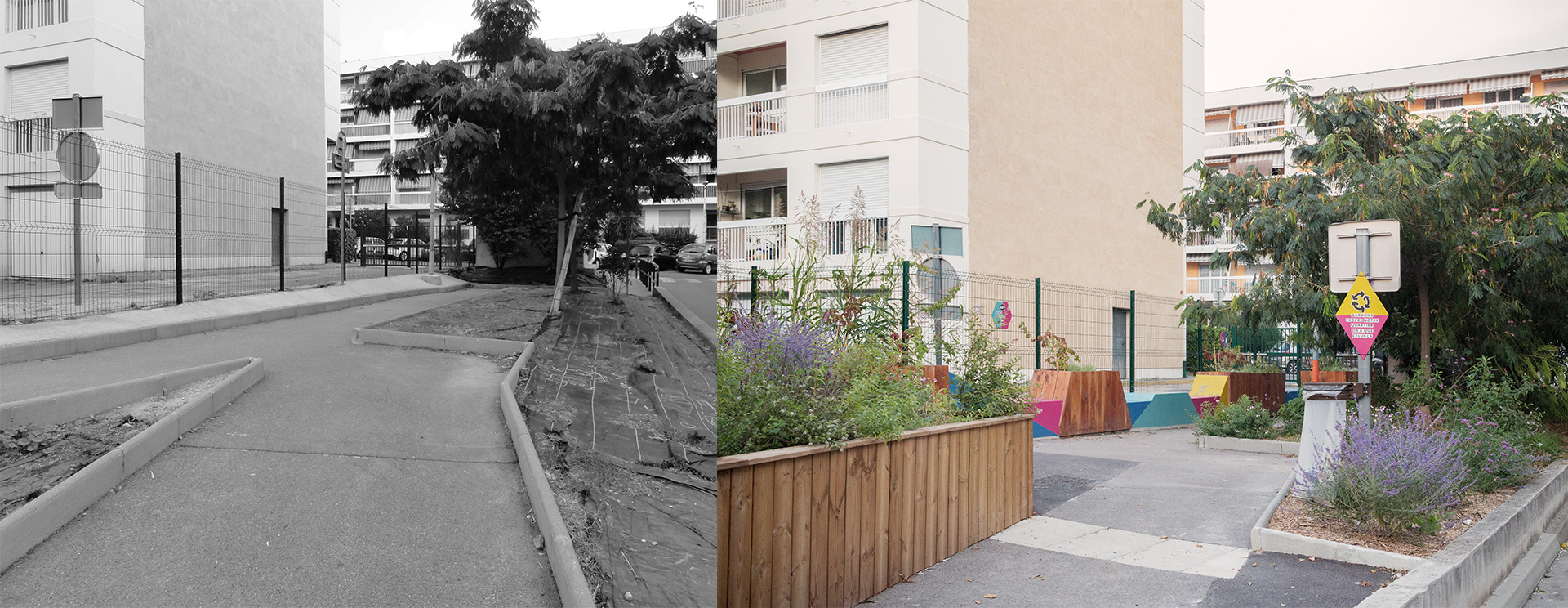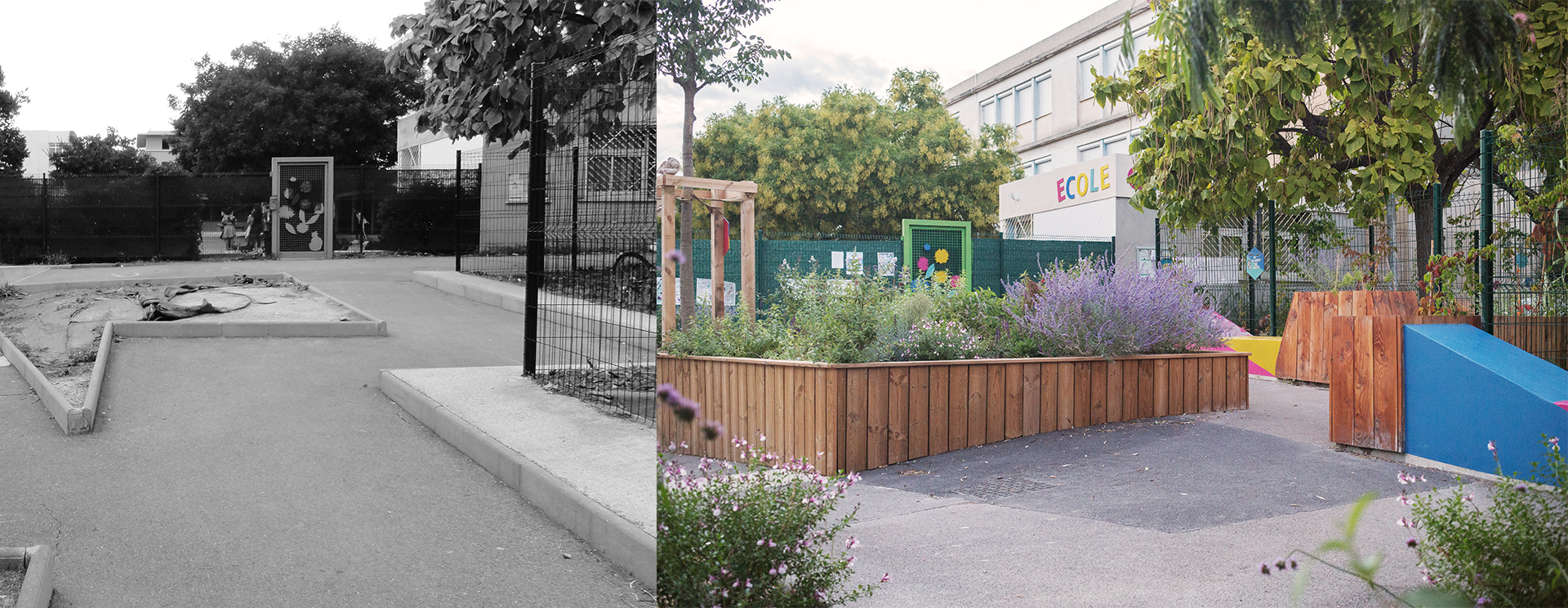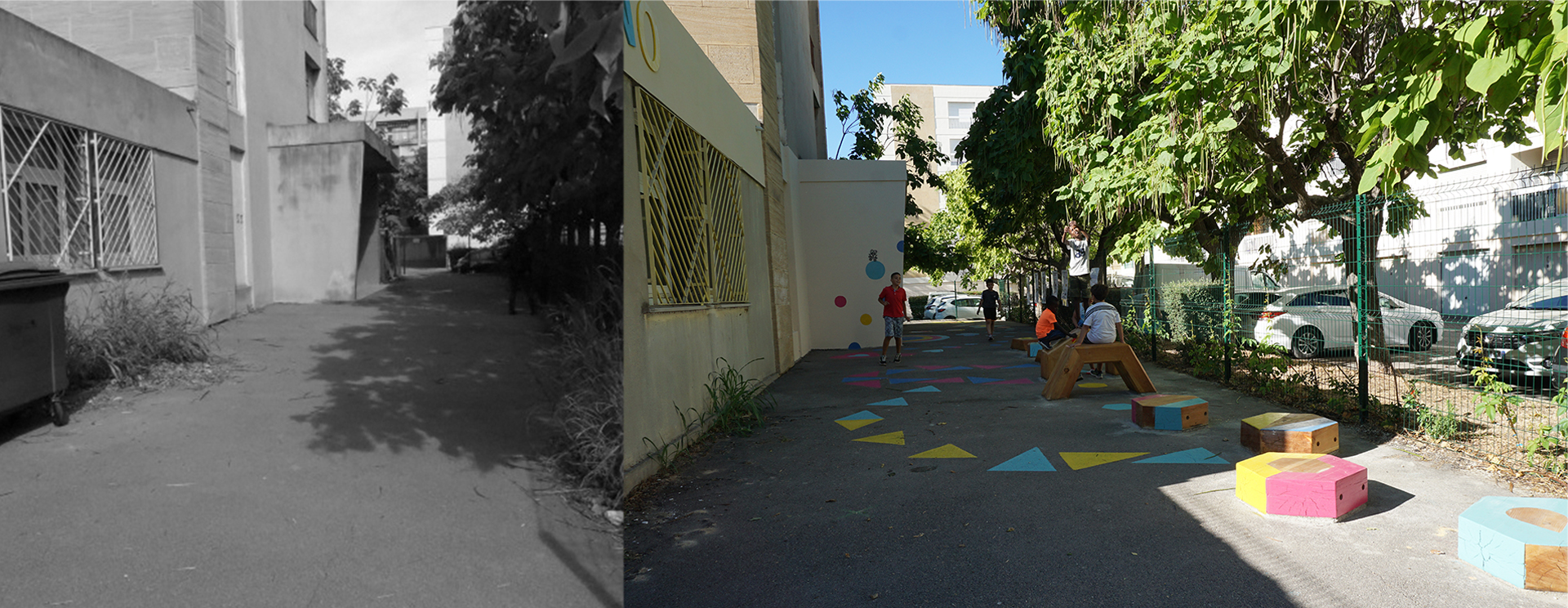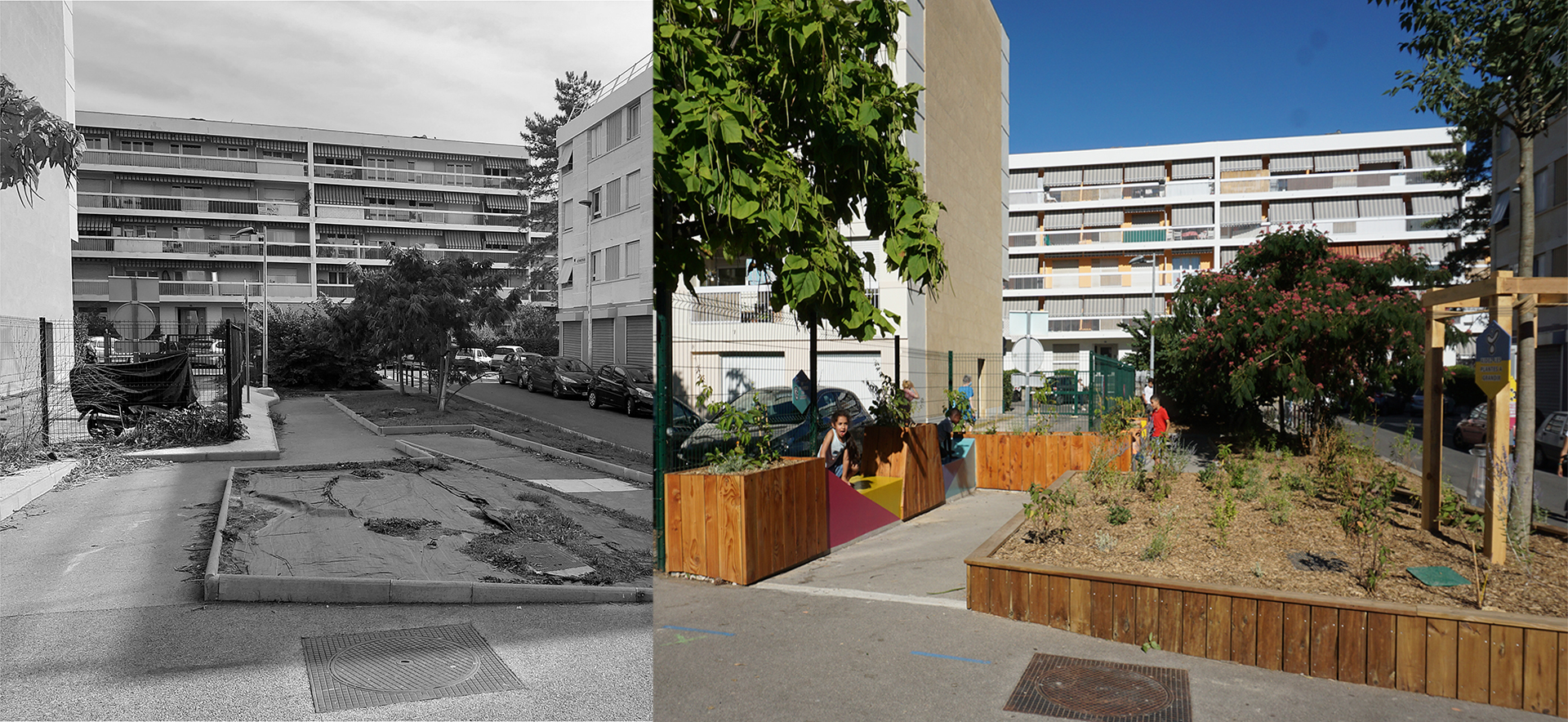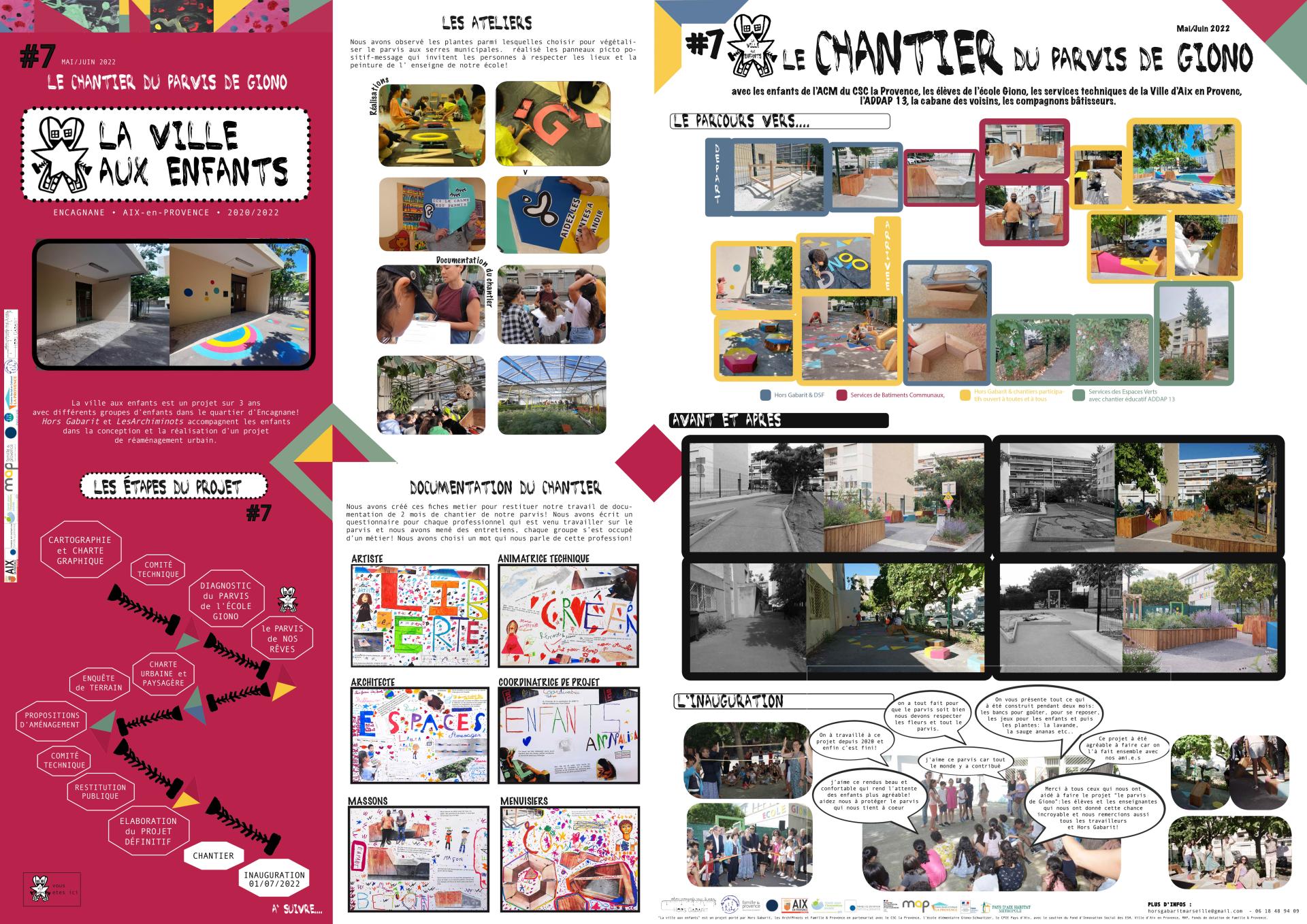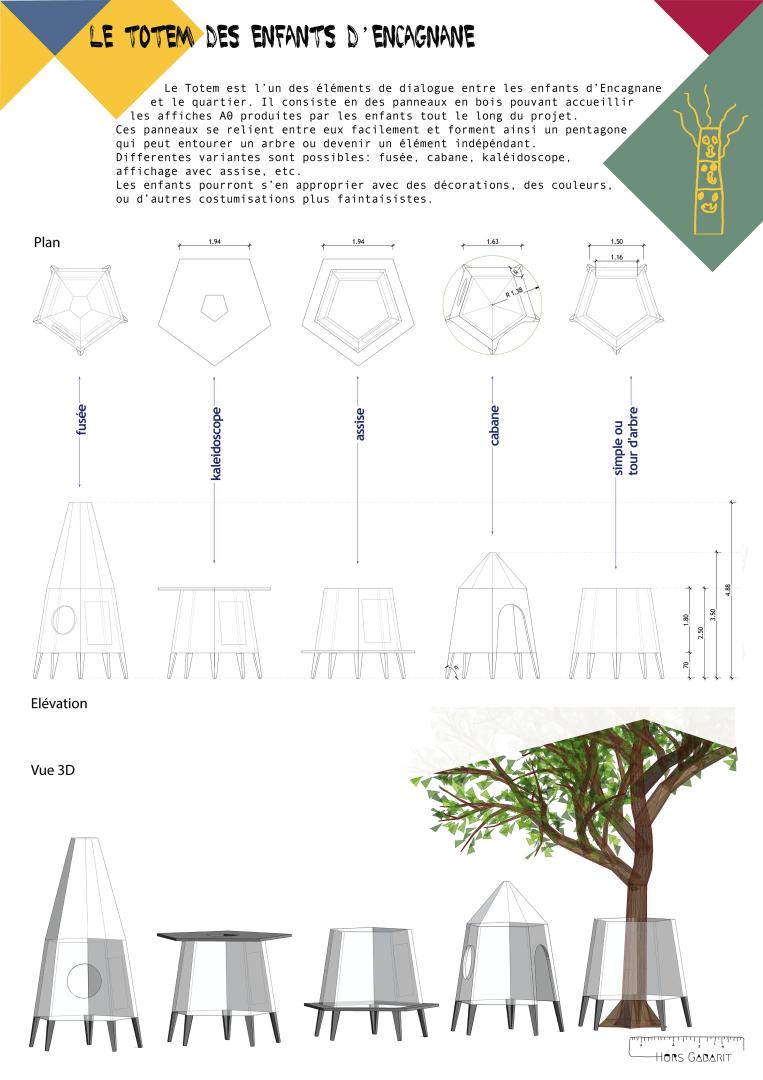The city for childrens
Basic information
Project Title
The city for childrens
Full project title
The city for childrens
Category
Prioritising the places and people that need it the most
Project Description
The objective of the project was to make children actors in their environment and help them improve one or more spaces through a project that embodies their own voice and needs. Regular workshops have been conducted with childrens between 6 and 11 years hold in order to make a diagnosis of the state of the neighborhood, to choose together a place of intervention, to imagine the change of the chosen space, to discuss with the technical services concerned and finally to follow the construction
Geographical Scope
Local
Project Region
Aix-en-Provence, neighborhood Encagnane, France
Urban or rural issues
Mainly urban
Physical or other transformations
It refers to a physical transformation of the built environment (hard investment)
EU Programme or fund
No
Description of the project
Summary
For 3 years and through different workshops we have accompanied children of Encagnane district, to express themselves about their environment and to become agents of change. The workshops are led by a multidisciplinary pair or trinomial of architectes, urban planners, anthropoplogist, graphic designer, herbalist. The work with the children unfolds through different stages : cartography and graphic charter, urban and landscape charter, diagnosis of the neighbohood and choice of the place to renovate, diagnosis of this place (the forecourt of the school) and field survey, design project of the forecourt, exchanges with the technical committee (representatives of social landlord, associations, tecnhical services of the townhall) construction site and inauguration.
Posters and poster cards summarizing each stage present the work of the children and are distributed in the neighborhood and stuck on a Totem built and installed in a square in the neighborhood in order to communicate as widely as possible about the process and the project in progress. .
The worksite involved the coordination of the interventions of the Green Spaces services and the Municipal Buildings Service, the participatory worksite with young people and the participatory workcamps with the inhabitants of the district, and many associations based on Encagnane.
The project's objectives were :
1) Accompany children in questioning their urban environment in order to:
- Allow them to look at the neighborhood differently
- Organize a consultation on an outdoor space to be redeveloped
- Analyze and design improvements to living spaces used by childrens
2) Promote greater consideration of children in the life of the city :
- Get adults to consider children as a resource of proposals
- Restore an intergenerational vocation to public or common spaces
- Encourage public actors to take children into account in the urban renewal of the district
3) Develop a synergy of local actors
Posters and poster cards summarizing each stage present the work of the children and are distributed in the neighborhood and stuck on a Totem built and installed in a square in the neighborhood in order to communicate as widely as possible about the process and the project in progress. .
The worksite involved the coordination of the interventions of the Green Spaces services and the Municipal Buildings Service, the participatory worksite with young people and the participatory workcamps with the inhabitants of the district, and many associations based on Encagnane.
The project's objectives were :
1) Accompany children in questioning their urban environment in order to:
- Allow them to look at the neighborhood differently
- Organize a consultation on an outdoor space to be redeveloped
- Analyze and design improvements to living spaces used by childrens
2) Promote greater consideration of children in the life of the city :
- Get adults to consider children as a resource of proposals
- Restore an intergenerational vocation to public or common spaces
- Encourage public actors to take children into account in the urban renewal of the district
3) Develop a synergy of local actors
Key objectives for sustainability
In order to design and imagine the project for the forecourt, childrens have thinking about to reduce mineral soils and introduce nature in this space. They imagine, wrote and built panels with messages to other citizens to respect the site
Key objectives for aesthetics and quality
Childrens involved in the process and in the project for the forecourt had thinking about coulours, forms, materials, associating each of those elements in order to have a colorful, scented, clean, multi-use and multi-generational space. The question of aesthetics was explored collectively and through practical exercises like drawing and models
Key objectives for inclusion
The children are the big ones forgotten by the urban planning and public policies. Our cities are less and less suitable and secure for children who are not only losing spaces to play, to exchange and to make adventures but also spaces of autonomy. Our project wanted to include children's voice in urban development and show to each-one that the voice of children is relevant and can improve spaces and ways of doing them.
Results in relation to category
The process was able to lead to a concrete achievement (the project for the forecourt). This was an objective but it was not easy to achieve it (economics, standards, planning). We can consider this achievement as a success car childrens were very happy and proud to see the realization of their dreams and their work.
In the forecourt today parents can wait for their children in a more pleasant setting, children can play and use this space as a living space.
In the collective memory this place will be a place arranged by the children and it will work as a trigger for other similar experiences.
By seeing the experience via the web (site, film etc.) other social landlords, real estate developers, politicians and cities are already contacting us to repeat the experience
In the forecourt today parents can wait for their children in a more pleasant setting, children can play and use this space as a living space.
In the collective memory this place will be a place arranged by the children and it will work as a trigger for other similar experiences.
By seeing the experience via the web (site, film etc.) other social landlords, real estate developers, politicians and cities are already contacting us to repeat the experience
How Citizens benefit
Many associations, school, social center of the neighborhood were involved in the process in differents ways (information, consultation,
public inquiry, participatory worksite...
public inquiry, participatory worksite...
Physical or other transformations
It refers to a physical transformation of the built environment (hard investment)
Innovative character
It was a bottom-up process involving childrens and able to change the way of doing things by politicians, technicians, decision-makers.
Disciplines/knowledge reflected
Imagining the forecourt project was a great exercise and cross-curricular learning for the children. A lot of academic knowledges were involved : history, geography, mathematics, geometry, writing, drawing. Teachers could use the content of the workshops to deepen different subjects.
But childrens also learn to listen each other, to work and discuss together, to enhance their voice with adults and decision-makers.
The children dabbled in areas such as cartography, public policies, decision-making process, public surveys, architecture and urban planning.
But childrens also learn to listen each other, to work and discuss together, to enhance their voice with adults and decision-makers.
The children dabbled in areas such as cartography, public policies, decision-making process, public surveys, architecture and urban planning.
Methodology used
It is a methodology of citizen participation declined and applied to childrens. Learn by doing, questioning, experiencing and playing.
How stakeholders are engaged
Many associations, school, social center of the neighborhood were involved in the process in differents ways (information, consultation,
public inquiry, participatory worksite...
Representatives of social landlord, school teaching teams, associations, tecnhical services of the townhall were convened to the technical committee to discuss the proposals of the children and find solutions to respect at the same time the standards and the technical requirements and the will and the needs of the children
public inquiry, participatory worksite...
Representatives of social landlord, school teaching teams, associations, tecnhical services of the townhall were convened to the technical committee to discuss the proposals of the children and find solutions to respect at the same time the standards and the technical requirements and the will and the needs of the children
Global challenges
As the Italian pedgogue Francesco Tonucci says, cities are better for everyone if they are designed by and for children. A city with childrens in her streets and squares will be safer and more inclusive for all. Learn to do cities with children is giving everyone a chance to live better our territories.
Learning transferred to other parties
The process and methodology can be replicated and transferred to other places and contexts. We have a lot of documentation of all the project, each workshop has his "roadmaps" and his balance sheet. The posters document and explain to the public each stage of the project. The urban and landscape charter can be used by planners and politicians to take into account the needs of children in urban planning.
Keywords
urban and architectural education
participatory planning and design
learn in action
inclusive city
citizen kids

